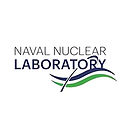
Simulation of Poisson's equation for Nuclear propulsions using Tensor Network based VQA

Quantum for Engineering Simulations
Poisson Equation in Engineering and Computing
The Poisson equation is a fundamental partial differential equation (PDE) that describes equilibrium distributions and appears in many engineering problems. It serves as a canonical "Hello world!" benchmark in computational engineering because of its ubiquity and foundational status in fields ranging from structural analysis to electromagnetics. Classical methods like finite difference and finite element analysis are traditionally used to solve Poisson’s equation, but they face severe scaling challenges for large or high-dimensional problems. These scaling limitations motivate the exploration of quantum computing for solving PDEs.
WISER partnered with The Naval Nuclear Lab to run a 6 month launchpad to explore the simulation of Poisson's equation for Nuclear propulsions using Tensor Network based VQA.
VQAs are designed to work around hardware limitations by using a hybrid quantum-classical loop and relatively shallow circuits, making them one of the most promising approaches to get useful results before full error-corrected quantum computers are available. Successfully implementing a VQA for the Poisson equation would demonstrate how we can harness near-term quantum devices for non-trivial computational engineering tasks, informing future efforts on more complex equations and helping to build confidence that quantum computers can eventually integrate into mainstream engineering workflows.
The Results
The WISER team developed a noise-resilient VQA that avoids ancillas and amplitude amplification, maintains shallow circuits, and uses zero CNOTs in the measurement layer well suited to today’s hardware. By exploiting the Laplacian’s sparsity and grouping commuting Pauli terms, they reduced circuit executions and two-qubit operations, improving fidelity and scalability. Overall, they present NISQ-compatible Poisson/PDE solvers that serve as stepping-stones toward quantum-accelerated
nuclear propulsion and thermal-hydraulic simulations.
The work was published as a case study in which the team highlights the practical challenges encountered in mapping the algorithm to physical hardware, and the software engineering considerations needed to achieve realistic results on today's non-fault-tolerant systems. Although not yet outperforming classical solvers, the work done demonstrates that real engineering PDE problems can be framed and executed on current quantum hardware. This is a critical early step in making quantum computing relevant for industry.
Quantum Mini-Apps for Engineering Applications: A Case Study
Horia Mărgărit, Amanda Bowman, Krishnageetha Karuppasamy, Alberto Maldonado-Romo,
Vardaan Sahgal, Brian J. McDermott
arXiv:2411.12920 [quant-ph]
Quantum Fellows in Focus
Spotlighting a story from the QSL fellows who made this work possible.
Krishnageetha Karuppasamy is a Ph.D. candidate in Computer Science at Oklahoma State University specializing in quantum algorithms for non-unitary operators and scientific simulation. Her research spans variational quantum algorithms, tensor-network methods, and sparse operator decompositions, and quantum applications. She is also a Qiskit Advocate (2025).
"I loved the idea to translating nuclear engineering constraints into quantum-friendly cost functions and circuit designs; along the way. This experience has propelled my career to the next step."


